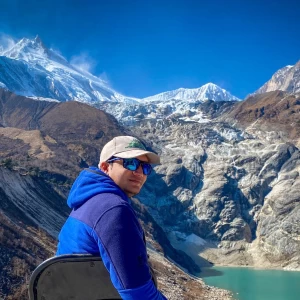You want to know which trek to choose in Nepal. Here are comparison for Annapurna Trek and Everest Trek.
Annapurna Trek Vs Everest Base Camp Trek: Which One To Do?
Table of Contents
Trekking in Nepal is a thrilling adventure that attracts people worldwide. The country’s diverse landscapes offer a unique experience for every trekker. From lush valleys to towering peaks, Nepal has something special for everyone. You’ll find it here whether you seek serene forests or majestic mountains.
Choosing the right trek is crucial for a memorable journey. The trek should match your fitness level and interests. The right trek can make your Nepal adventure unforgettable. Consider factors like altitude, terrain, and weather when choosing.
Popular options include the Everest Base Camp trek, also known as the EBC trek and the Annapurna trek. Both the treks involve different challenges and scenic beauty.
Here’s a quick overview of these two famous treks to help you decide.
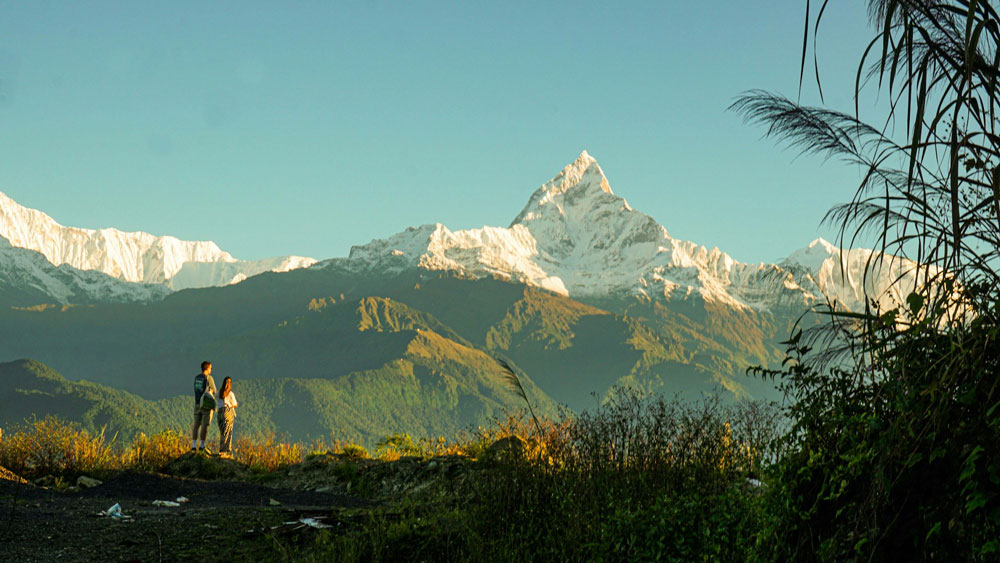
Annapurna Trek
The Annapurna region is a stunning area in Nepal. It is known for its beautiful mountains and rich culture. This region offers a variety of trekking routes, that suit different experience levels. This area is home to some of the world’s highest peaks, including Annapurna I, which stands at 8,091 meters.
The cultural richness of the Annapurna region is equally impressive. Various ethnic groups inhabit it. Including Gurungs and Thakalis, each with its own unique traditions and lifestyles.
Major treks of Annapurna region are :
Annapurna Circuit Trek
.jpg)
The Annapurna Circuit Trek is a popular adventure in Nepal. It offers stunning views and cultural experiences. The trek has several starting points, including Besisahar. It was the original starting point.
Nowadays, most trekkers begin at Jagat due to better road conditions. Some start at Dharapani, the regular starting point of the Annapurna circuit route. During rainy seasons, Bhulbhule is an alternative start to avoid muddy trails. The best times to undertake the trek are during the peak trekking seasons of spring and autumn.
The route takes you through diverse landscapes. It can start from lush green valleys to arid highlands. One of the major highlights is Thorong La Pass. It is also the highest point of the trek at 5,416 meters.
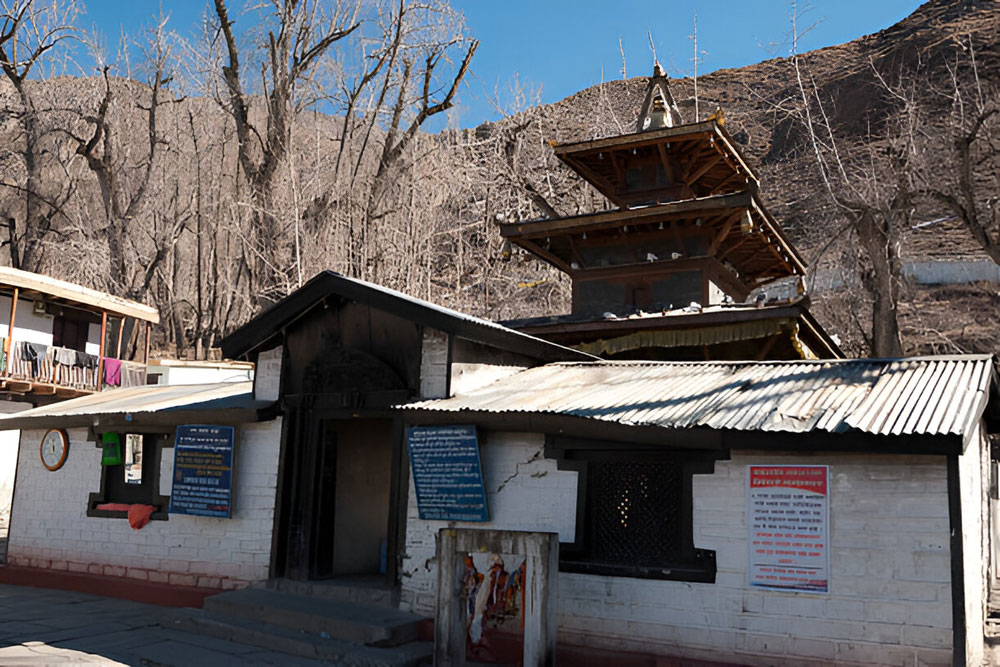
Crossing this pass is challenging but rewarding. It offers breathtaking views of the surrounding peaks. Another key highlight is Muktinath. It is a sacred site for both Hindus and Buddhists, for its ancient temples and natural springs.
Transportation to the starting points is convenient. Regular buses and jeeps are available from Kathmandu. After completing the trek, you can drive or fly from Jomsom to Pokhara. Pokhara is a popular city with beautiful lakes. It offers a relaxing atmosphere, perfect for unwinding after your trek. From Pokhara, you can return to Kathmandu by bus or a short flight.
The Annapurna Circuit Trek takes a well-rounded experience. With proper planning and preparation, this trek can be a memorable adventure. Ensure you have the right gear. Acclimatize properly to enjoy a safe and enjoyable journey.
Annapurna Base Camp Trek
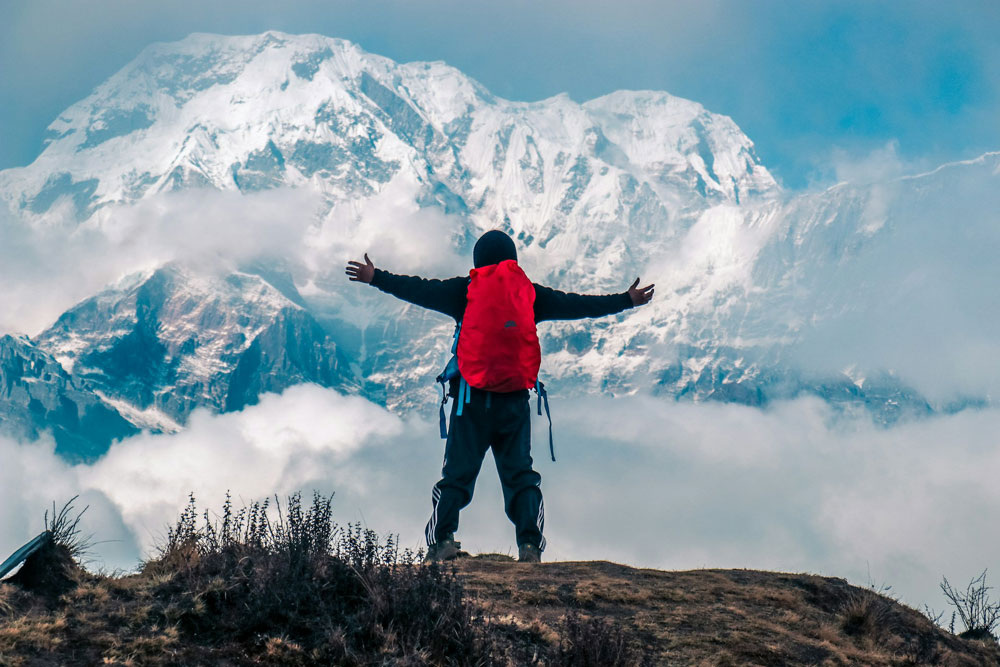
The Annapurna Base Camp Treks start from Nayapul, Dhampus, or Phedi. Most trekkers begin from Nayapul. It is a small town accessible by a 1.5-hour drive from Pokhara. The route passes through lush forests, terraced fields, diverse villages, and great views.
Key stops of ABC Trek include Ghorepani, known for its panoramic sunrise views from Poon Hill. Tadapani offers beautiful forest scenery. The trek continues to Machapuchare Base Camp at 3,700 meters. It provides a stunning view of the sacred Fishtail Mountain.
While the risk of altitude sickness is lower compared to the EBC trek, it is still important to acclimatize properly.
From Machapuchare Base Camp, you trek to Annapurna Base Camp at 4,130 meters. Here, you are surrounded by towering peaks. It includes Annapurna I, Annapurna South, and Hiunchuli. The dramatic mountain scenery is a major highlight.
Ghandruk village is another significant stop. It is known for its traditional Gurung culture and views of the Annapurna range. The village offers insight into local life and traditional architecture.
The natural hot springs at Tatopani are a relaxing experience after the trek. Soaking in these hot springs helps soothe your muscles.
Transportation to Nayapul is easy. Regular buses and private jeeps are available from Pokhara. After finishing the trek, you can return to Pokhara by bus or a jeep.
Best Time to Trek in Annapurna
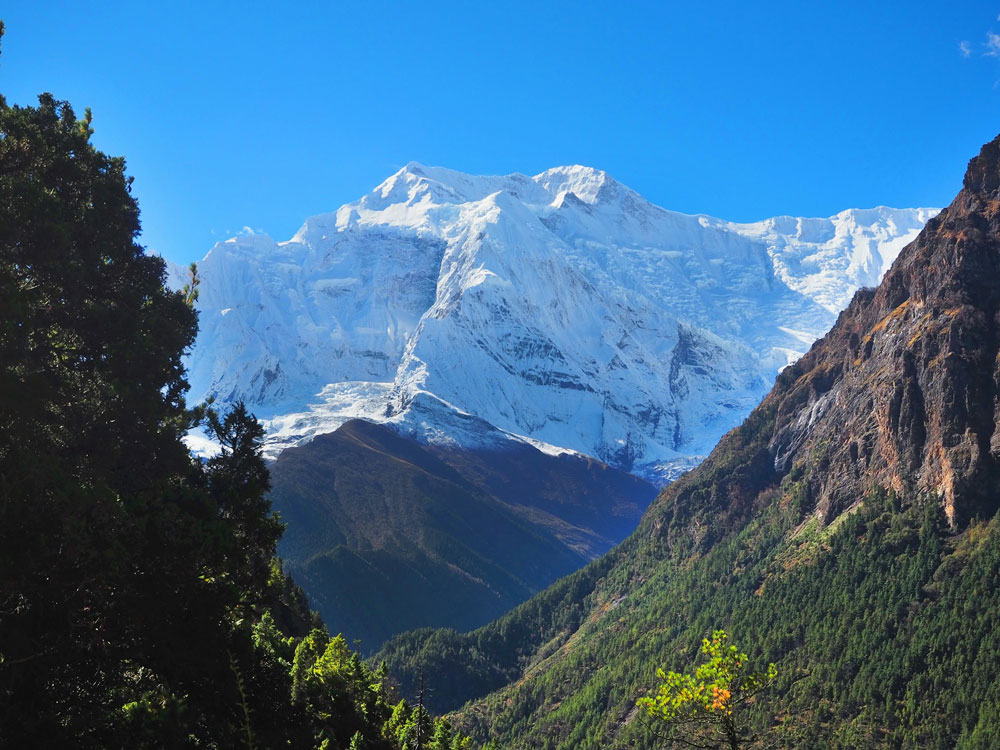
Trekking in the Annapurna region is great all year round. However, the best time to trek in the Annapurna region is during spring and autumn.
Spring (March to May) offers mild temperatures and blooming rhododendrons. It also creates a colourful landscape.
Autumn, from September to November, is an ideal time for trekking. The skies are clear, and the weather is stable. This makes it perfect for trekking in Nepal.
During these seasons, daytime temperatures are between 10°C and 20°C.
The nights are cooler at higher altitudes. This weather makes trekking comfortable and enjoyable.
In contrast, the monsoon season (June to August) brings heavy rains. This can lead to slippery trails and limited visibility. However, you can still trek in the Annapurna region during this time.
Popular monsoon treks include some of the Best Annapurna trails. Some are the Annapurna Circuit Trek, Upper Mustang Trek, Nar Phu Valley Trek, and Ghorepani Poonhill Trek.
Winter (December to February) is cold and snowy. At high altitude, it can make trekking more difficult and less enjoyable.
Everest Base Camp Trek
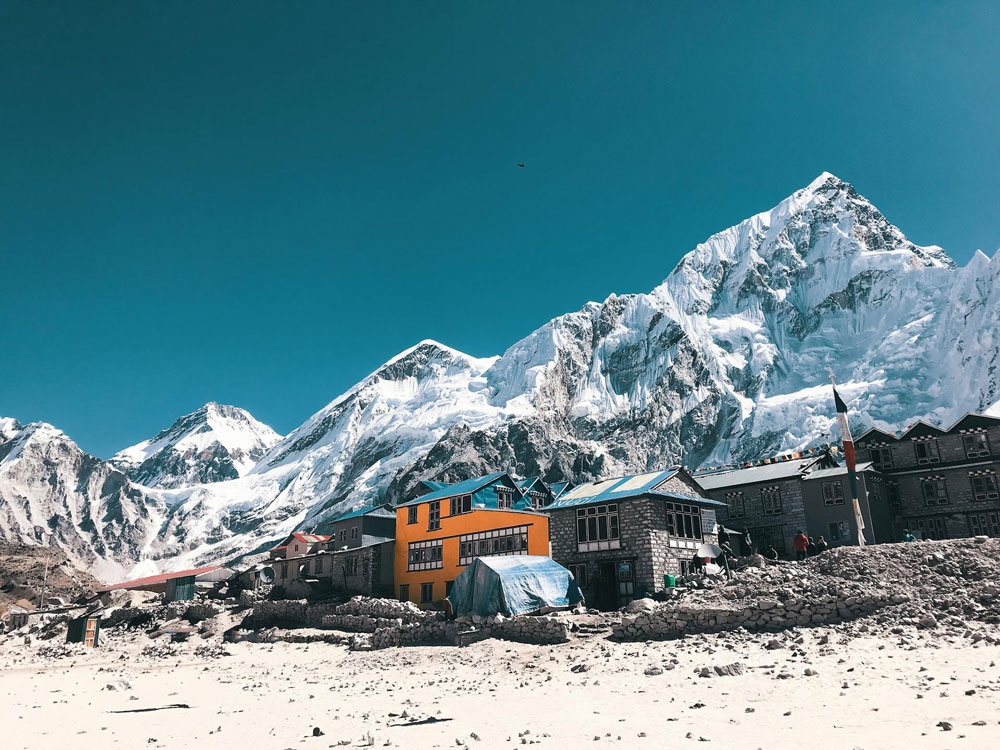
The Everest region in Nepal is known for its stunning landscapes and rich culture, especially highlighted by the EBC trek. Mount Everest, the highest peak in the world at 8,848.86 m, is the main attraction. The trek offers breathtaking views of Everest, Lhotse, Nuptse, and many more.
The trek also highlights the unique Sherpa culture. Sherpas are popular for their mountaineering skills, warm hospitality, and hard work. Along the way, you can visit traditional Sherpa villages and monasteries. This gives you a glimpse into their way of life and customs.
Join the cheapest Everest Base Camp Trek with us.
Everest Base Camp Trek Route
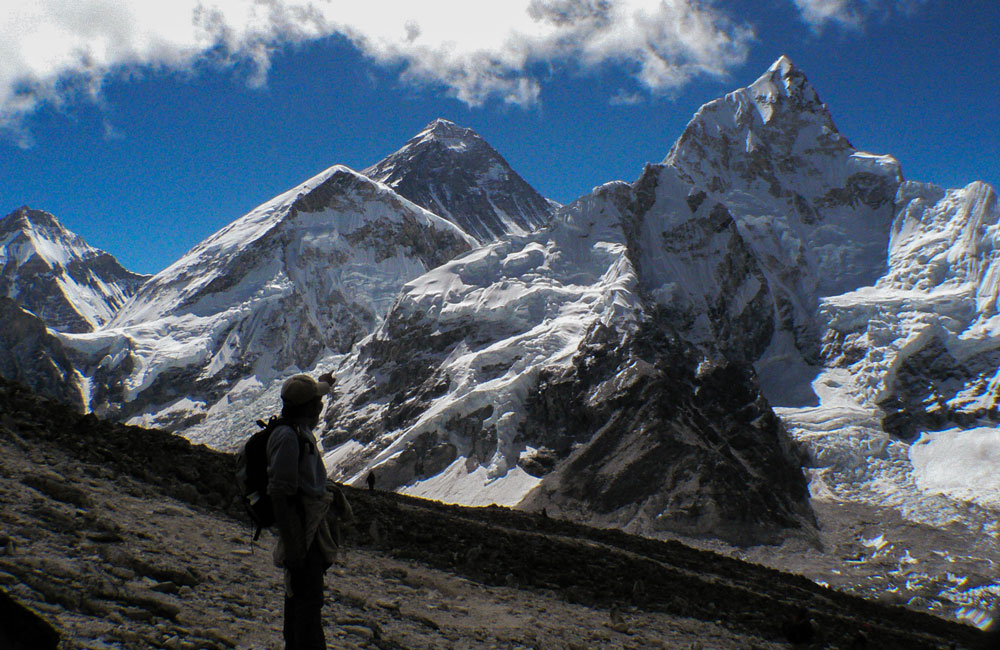
The Everest Base Camp Trek starts in Lukla, a small town in Nepal. You take an exciting flight from Kathmandu to get there. Lukla Airport has a short, steep runway, making the landing thrilling.
From Lukla, the trek leads through lush forests and Sherpa villages. The first major stop is Namche Bazaar at 3,440 meters. This busy town offers great views and helps you adjust to the altitude. Trekkers need to be aware of the risk of altitude sickness and take necessary precautions.
Next, you visit Tengboche Monastery, located at 3,867 meters. The monastery has beautiful views of Everest, Lhotse, and Ama Dablam.
The trek continues to Kala Patthar, a high point at 5,545 meters. From Kala Patthar, you get stunning, close-up views of Everest and nearby peaks. Finally, you reach Everest Base Camp at 5,364 meters. Here, you are at the base of the world’s highest peak, enjoying amazing mountain scenery.
Everest Three Passes Trek
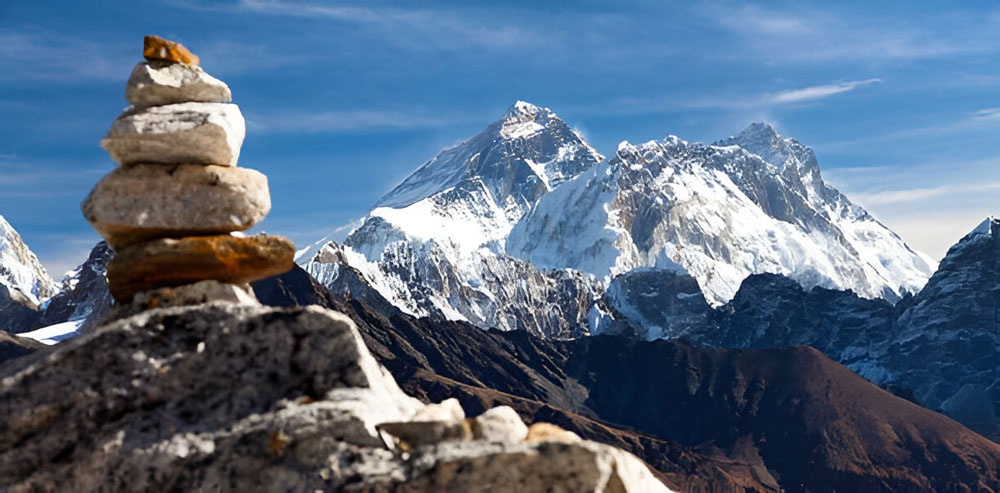
The Everest Three Pass Trek is a challenging adventure in Nepal. This trek involves crossing three high passes: Kongma La, Cho La, and Renjo La. Each pass offers stunning views and tests your endurance.
Kongma La Pass is the first and the highest at 5,535 meters. It provides amazing views of Makalu and Ama Dablam. Next is Cho La Pass at 5,420 meters. This pass connects the Everest region to the Gokyo Valley. The trail can be icy, so it's a real challenge.
Renjo La Pass is the final pass at 5,360 meters. It offers breathtaking views of the Gokyo Valley and Mount Everest. The trek also includes a visit to the beautiful Gokyo Lakes. These turquoise lakes are a highlight of the trek. The Everest Three Pass Trek combines natural beauty and physical challenge.
Also, check, Mount Everest Helicopter Tour from Kathmandu
Best Time to Trek in Everest
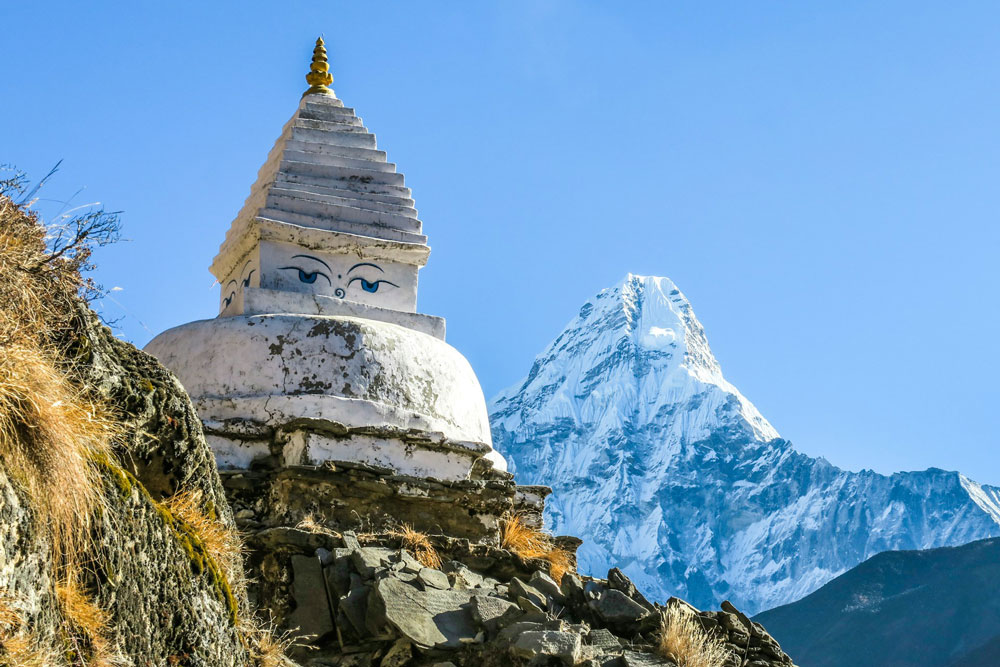
Trekking on Everest is an unforgettable adventure. It’s essential to choose the best time to trek for the best experience. The weather plays a crucial role in ensuring a safe and enjoyable journey.
The best time to trek in Everest is during spring (March to May) and autumn (September to November). In spring, temperatures are mild, and the trails are colourful with blooming flowers. Autumn offers clear skies and stable weather, making it ideal for trekking. These periods are considered the peak trekking seasons, attracting many trekkers due to the favourable weather conditions.
During these seasons, daytime temperatures range from 10°C to 20°C, with cooler nights. This makes trekking comfortable and enjoyable. Monsoon season (June to August) brings heavy rains and slippery trails, while winter (December to February) is cold and snowy, making trekking more challenging.
Comparing the Annapurna Trek and Everest Base Camp Trek
With all the details done, now let’s hit the actual comparison between the Annapurna Trek, including the Annapurna Circuit treks, and the Everest Base Camp (EBC) trek:
Difficulty level
The Annapurna Trek and Everest Base Camp Trek offer different difficulty levels.
Annapurna is equally challenging as Everest. However, there are not many differences in altitudes. If the trekkers do the Everest Base Camp, they reach 5,364 metres with Kalapatthar separate. Whoever hikes to Kalapatthar goes to 5,545 metres.
If we get to Annapurna Trek, the walk reaches 5,416 metres in Thorong La Pass. Thus, in altitude, the Everest region wins.
Trekkers need to be aware of the risk of altitude sickness and take necessary precautions.
If you look at the Everest Base Camp trails, they are not much steeper except for Namche and Tengboche. The rest of the trail is more rugged into the Himalayan rocky terrain. However, Annapurna Circuit does not have such a steeper climb. The highest steep climb you do is when you cross the Thorong La.
Similarly, the idea hits Annapurna Base Camp Trek vs Everest Base Camp Trek as well. To conclude, the ABC treks are easier than the EBC trail. However, both offer world-class mountain scenery.
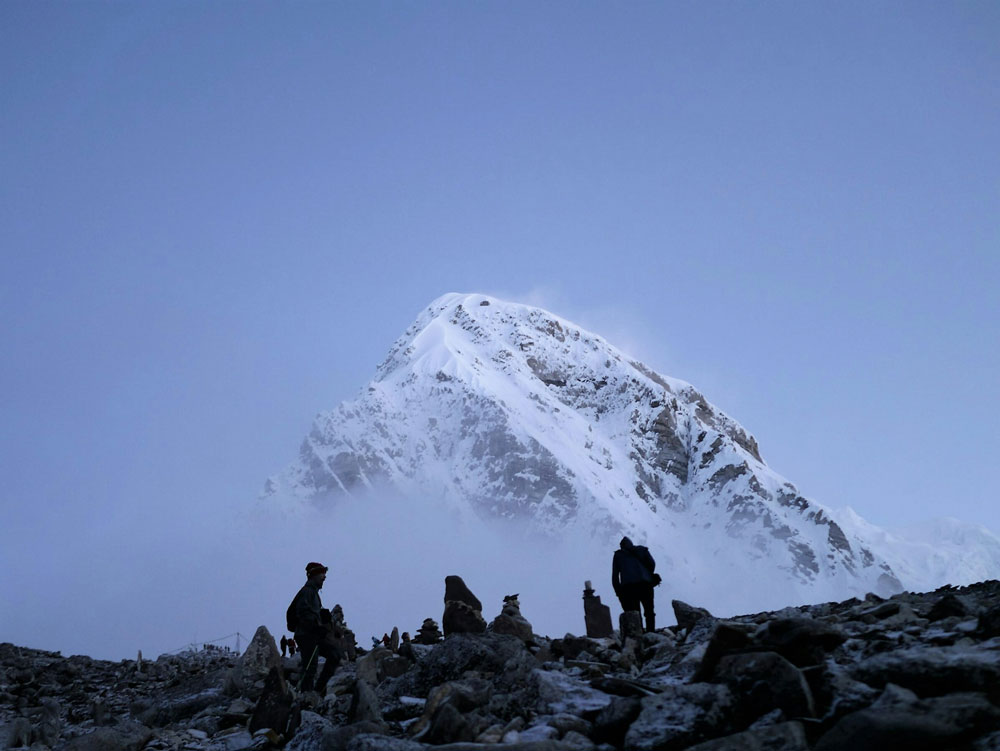
Scenery Difference
Annapurna offers diverse landscapes, from lush forests to high mountain passes. You see rice terraces and blooming rhododendrons. Everest Base Camp Trek provides dramatic high alpine scenery, with glaciers (Khumbu Glacier) and towering peaks. Both treks are visually rewarding including the beautiful mountain scenery but in unique ways.
Cultural Experiences
Cultural experiences also vary. Annapurna Trek takes you through the Gurung and Thakali villages. You can experience their traditional lifestyles and hospitality. In contrast, Everest Base Camp Trek immerses you in Sherpa culture. You visit monasteries and learn about their mountaineering heritage.
The Logistics
Accessibility and logistics are different. Annapurna Base Camp Trek usually starts with a drive from Pokhara to places like Nayapul. While the Annapurna Circuit starts from Besisahar onwards by drive. The Everest region trekking begins with a flight to Lukla. Accommodation and facilities are well-developed on both treks. The guest houses provide proper meals and lodging.
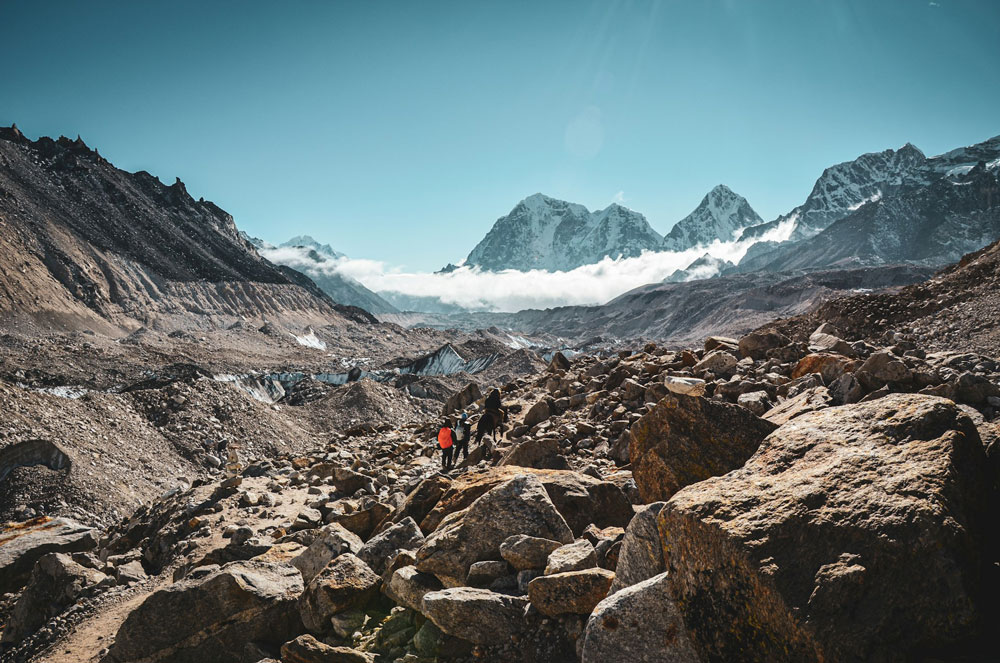
Which Trek to Choose?
The Annapurna treks are less challenging with gradual ascents. It is ideal for regular hikers and offers diverse landscapes. It's more affordable, with fewer flights and lower accommodation costs. This trip typically takes 10-14 days.
The Everest Base Camp Trek is tougher with higher altitudes and rugged paths. It is good for experienced trekkers. It involves higher costs and takes 12-16 days, requiring careful acclimatization.
The scenery varies: Annapurna features rice terraces, rhododendron forests, and high mountain passes. While Everest showcases views of Everest, glaciers, and high alpine scenery. Culturally, Annapurna passes through Gurung and Thakali villages. The Everest immerses you in Sherpa culture.
Both treks provide unique experiences and challenges. Choose based on your fitness level, budget, and preferred scenery.
FAQs
Here are the most asked questions by our travellers before deciding to trek any of the Annapurna Treks or Everest Base Camp Treks
Is Annapurna harder than Everest Base Camp?
Annapurna region has several trekking routes. If you just talk about Annapurna Circuit or Annapurna Base Camp, no, they are not harder than Everest Base Camp. However, choosing the off-routes like Nar Phu Valley can make the Annapurna Trekking harder than Everest.
Which is better Annapurna Circuit or base camp?
Annapurna circuit and base camp are equally great treks in the Annapurna region. However, it all depends on choices. Annapurna Base Camp Trek is the best choice if you are a beginner hiker but still want to be close to the mountains. However, if your choices are beyond just the mountain closeness, the Annapurna Circuit wins all. From views and authenticity to the challenges the circuit trekking trails are much better.

